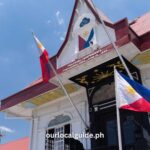Famous Sculptures in the Philippines: A Guide to Iconic Masterpieces
The Philippines, a country known for its rich history, vibrant culture, and artistic heritage, is home to numerous sculptures that have captured the imagination of both locals and tourists alike. These sculptures range from historical monuments commemorating national heroes to contemporary artworks that provoke thought and evoke emotion.
In this article, we explore some of the most famous sculptures in the Philippines, providing insights into their historical context, artistic significance, and the masterminds behind these iconic creations.
Whether you’re an art enthusiast, a history buff, or simply someone who appreciates the beauty of well-crafted sculptures, this guide offers a glimpse into the Philippines’ rich sculptural landscape.
1. Rizal Monument in Luneta Park
Located in the heart of Manila, the Rizal Monument is arguably the most iconic sculpture in the Philippines. Dedicated to Dr. Jose Rizal, the country’s national hero, the monument features a bronze statue of Rizal standing over a pedestal, with an obelisk as its backdrop.
Designed by Swiss sculptor Richard Kissling, the monument symbolizes the Filipinos’ struggle for freedom and independence. It serves as a focal point for national celebrations and commemorations.
2. The Oblation
The Oblation is a famous sculpture found in various University of the Philippines (UP) campuses, with the most notable one located in UP Diliman. Created by National Artist Guillermo Tolentino in 1939, this iconic statue represents the selfless offering of oneself to the country.
Depicting a naked man with arms outstretched and looking up to the sky, the Oblation has become a symbol of academic freedom and the pursuit of knowledge.
3. Bonifacio Monument (Monumento)
The Bonifacio Monument, or “Monumento,” stands at a busy roundabout in Caloocan City, commemorating the heroism of Andres Bonifacio, the leader of the Philippine Revolution against Spanish colonial rule.
Sculpted by Guillermo Tolentino, this monument captures the revolutionary spirit of the Filipinos through a series of figures surrounding Bonifacio, each representing different aspects of the struggle for independence.
4. Tinikling Monument
Located in Leyte, the Tinikling Monument celebrates the Philippines’ national dance, the Tinikling. This sculpture beautifully captures the grace and agility of dancers navigating between bamboo poles, a testament to the country’s rich cultural traditions and the Filipino’s innate love for dance and music.
5. People Power Monument
The People Power Monument is a testament to the peaceful revolution that restored democracy in the Philippines in 1986. Located along EDSA in Quezon City, this sculpture ensemble by Eduardo Castrillo commemorates the unity and courage of Filipinos who gathered to overthrow a dictatorship through non-violent means. It’s a powerful reminder of the strength found in unity and peaceful protest.
6. The Blood Compact Monument
Situated in Bohol, The Blood Compact Monument honors the first treaty of friendship between the East and the West. This sculpture by National Artist Napoleon Abueva depicts the blood compact between Datu Sikatuna, a native chieftain, and Spanish explorer Miguel López de Legazpi in 1565. It symbolizes the beginning of significant cultural exchanges between Filipinos and Spaniards.
7. UPLB’s “Ugnayan” Sculpture
Located at the University of the Philippines Los Baños, the “Ugnayan” sculpture by National Artist Napoleon V. Abueva represents the strong bond and collaborative spirit within the UP community. This abstract sculpture captures the essence of unity, cooperation, and the interconnectivity of various fields of knowledge in shaping the nation’s future.
8. EDSA Shrine Freedom Monument
Another notable work by Eduardo Castrillo, the EDSA Shrine Freedom Monument, located at the EDSA Shrine in Quezon City, commemorates the role of the Virgin Mary in the peaceful People Power Revolution. This religious and historical monument not only highlights the spiritual aspect of the revolution but also the miraculous peaceful outcome of the mass protests.
Conclusion
The Philippines is a treasure trove of sculptures that not only beautify its landscape but also carry deep historical and cultural significances. From monuments that honor heroes and pivotal moments in the country’s history to artworks that celebrate Filipino traditions and values, these sculptures offer a unique lens through which to view the rich tapestry of Philippine life.
Whether you’re exploring the bustling streets of Manila, the historic sites of Luzon, or the picturesque locales of Visayas and Mindanao, these iconic sculptures serve as silent witnesses to the Philippines’ enduring spirit and legacy.
















